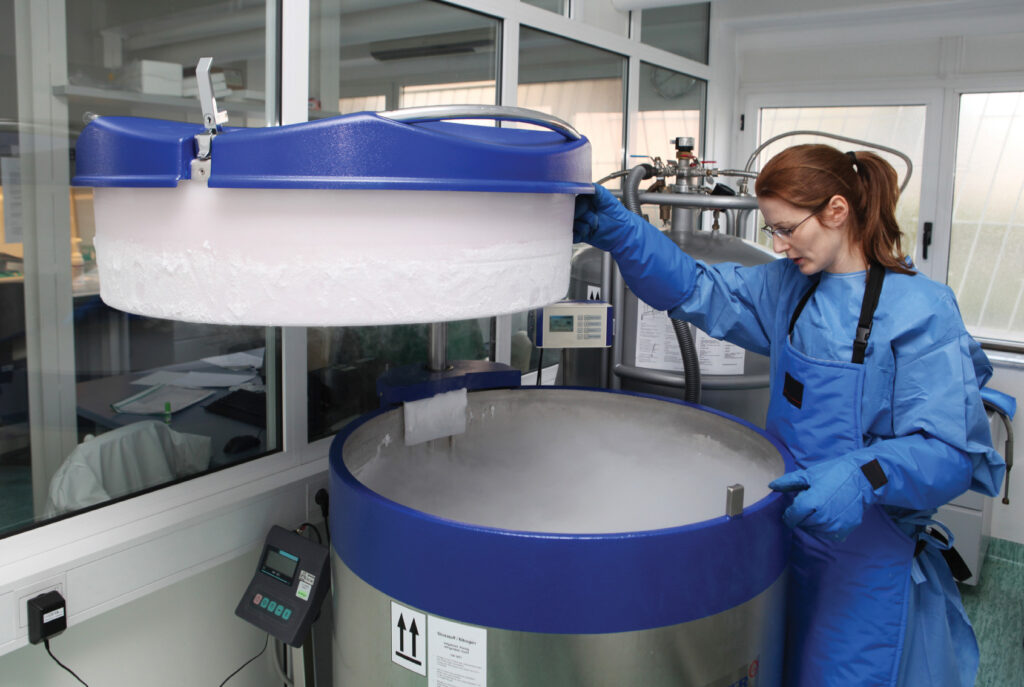Cryopreservation, the process of preserving living cells and tissues at ultra-low temperatures, is revolutionizing fields like medicine, biodiversity conservation and reproductive sciences. The core enabling technology behind cryopreservation is specialized cryopreservation equipment that can safely and efficiently freeze biological samples and store them indefinitely at ultra-cold temperatures.
Cryogenic Freezers and Storage Systems
Cryogenic freezers and storage systems form the backbone of any cryopreservation facility. They provide the necessary ultra-low temperature environment to safely preserve biological samples frozen at sub-zero temperatures. Based on the target temperature range, cryogenic freezers can be divided into different classes:
– Mechanical Freezers (-80°C): Often used for short to medium term Cryopreservation Equipment of cell cultures and tissue biopsies. Mechanical freezers use compressed gases and thermoelectric cooling to maintain temperatures of -80°C.
– Liquid Nitrogen Freezers (-140°C to -196°C): Considered the gold standard for long term cryogenic storage. Samples are preserved in cryogenic storage tanks filled with liquid nitrogen which maintains temperatures far below -140°C. These freezers find widespread use for sperm, egg and embryo banking.
– Ultra-Low Temperature Freezers (-150°C): Bridge the gap between mechanical and liquid nitrogen freezers by offering lower temperatures than mechanical freezers without the need for constant liquid nitrogen replenishment. Commonly used for biobanking applications.
– Cryogenic Storage Tanks: Cylindrical vacuum insulated vessels that can hold hundreds of thousands of samples preserved in liquid nitrogen. Tanks provide fail-safe long term archival storage for over 50 years.
Controlled Rate Freezing Equipment
For maximum post-thaw viability, biological samples must be frozen in a controlled, step-wise manner to avoid formation of ice crystals. Controlled rate freezers precisely regulate cooling rates during freezing, typically 1-10°C/min, to minimize cellular damage.
– Programmable Freezers: Can be programmed with multiple cooling and warming ramps to achieve optimum freezing protocols for different cell/tissue types. Commonly used in research laboratories.
– Passive Freezing Containers: Insulated containers that rely on air or liquid nitrogen vapor for controlled cooling, popular for smaller sample volumes in stem cell banking.
– Computer-controlled Chamber Freezers: Provide highest level of automation and uniformity for large cryopreservation operations like sperm, egg or embryo banks.
Vapor Phase Storage Systems
For maximum sample viability over decades, cryopreservation equipment also includes vapor phase storage systems that minimize temperature fluctuations during routine access.
– Gas Phase Tanks: Liquid nitrogen Dewar tanks outfitted with insulation packaging allow samples to be suspended above liquid nitrogen in its vapor phase at -150°C.
– Cryo-boxes: Benchtop containers that maintain vapor phase storage conditions during short term retrieval/transport of samples from conventional liquid nitrogen tanks.
– Robotic Storage Systems: Fully automated tanks that use robotic arms to precisely store and retrieve thousands of samples while maintaining desired vapor phase conditions.
Widespread Applications of Cryopreservation
With steady advances in cryopreservation equipment, the applications of freezing biological materials have become remarkably widespread:
– Stem Cell Banking: Umbilical cord blood, bone marrow and other stem cell sources are freely frozen and stored for future therapeutic use.
– Biobanking: Research organizations worldwide archive biospecimens via facilitated cryopreservation services for future ‘omics studies.
– Reproductive Medicine: Sperm, egg, embryo and ovarian tissue cryopreservation has vastly expanded fertility preservation and assisted reproduction options.
– Gene Banks: International efforts led by organizations like Future Gene and Svalbard Global Seed Vault protect agricultural biodiversity through decades-long seed storage.
– Tissue Engineering: Three-dimensional matrices of preserved cells find use in developing regenerative therapies and organ transplantation analogs.
– Conservation Biology: Cryopreserved cell lines, gametes and embryos are maintained as a safeguard against species extinction in zoos and wildlife facilities.
As technologies for engineering and reprogramming cells continue to empower regenerative solutions, the role of robust cryopreservation infrastructure and equipment will become ever more pivotal. By safeguarding the essential building blocks of life itself against the ravages of time, cryopreservation promises to vastly extend the frontiers of biomedical research, biodiversity protection and individualized medicine for generations to come.
*Note:
1. Source: Coherent Market Insights, Public sources, Desk research
2. We have leveraged AI tools to mine information and compile it



